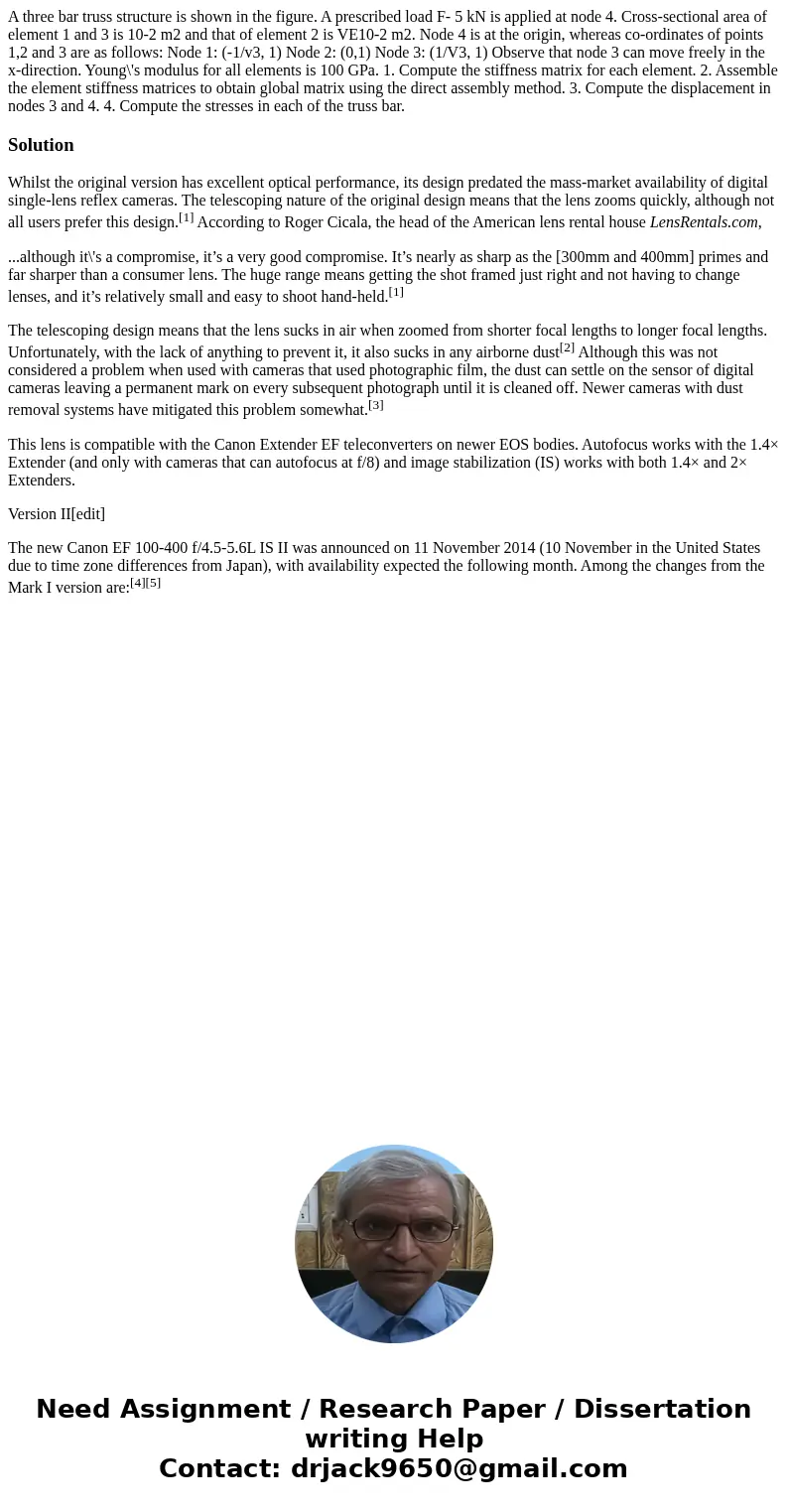A three bar truss structure is shown in the figure A prescri
Solution
Whilst the original version has excellent optical performance, its design predated the mass-market availability of digital single-lens reflex cameras. The telescoping nature of the original design means that the lens zooms quickly, although not all users prefer this design.[1] According to Roger Cicala, the head of the American lens rental house LensRentals.com,
...although it\'s a compromise, it’s a very good compromise. It’s nearly as sharp as the [300mm and 400mm] primes and far sharper than a consumer lens. The huge range means getting the shot framed just right and not having to change lenses, and it’s relatively small and easy to shoot hand-held.[1]
The telescoping design means that the lens sucks in air when zoomed from shorter focal lengths to longer focal lengths. Unfortunately, with the lack of anything to prevent it, it also sucks in any airborne dust[2] Although this was not considered a problem when used with cameras that used photographic film, the dust can settle on the sensor of digital cameras leaving a permanent mark on every subsequent photograph until it is cleaned off. Newer cameras with dust removal systems have mitigated this problem somewhat.[3]
This lens is compatible with the Canon Extender EF teleconverters on newer EOS bodies. Autofocus works with the 1.4× Extender (and only with cameras that can autofocus at f/8) and image stabilization (IS) works with both 1.4× and 2× Extenders.
Version II[edit]
The new Canon EF 100-400 f/4.5-5.6L IS II was announced on 11 November 2014 (10 November in the United States due to time zone differences from Japan), with availability expected the following month. Among the changes from the Mark I version are:[4][5]

 Homework Sourse
Homework Sourse